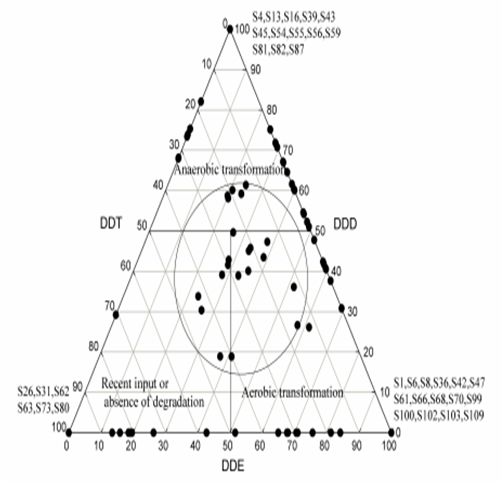OCPs Risk Assessment in the East Lake Enlightened Urban Lake Management
2013-11-12
Organochlorine pesticides (OCPs) have threatened the ecosystem and human health due to their persistence, high lipid solubility, and carcinogenic properties. Water as an environmental medium is most vulnerable to OCP pollution via a variety of routes, such as surface runoff and atmospheric deposition.
As the largest urban lake in China, East Lake resides in the urban area of Wuhan City. The rapid economic growth of Wuhan City, increase in vehicle, and tourism activity in the East Lake make the water quality at grade IV, which can only be used for industrial water, agricultural irrigation and general requirements of landscape, and recreational water without direct contact. However, the East Lake has been used for swimming, fishery, and tourism. The water quality of the East Lake may affect the health and safety of the locals and tourists.
Under the supervision of Prof. WANG Jun, Dr. YANG Yuyi from Wuhan Botanical Garden focused on the concentration determination, source analysis, and risk assessment of OCPs, particularly HCHs and DDTs in water of the East Lake.
The concentrations of 16 OCPs were analyzed in 108 surface water samples collected from the East Lake. The total concentrations of OCPs ranged from not detected to 120ngL−1 with predominance of δ-HCH, heptachlor, and α-HCH. The mean values of HCHs and DDTs were 7.40 and 5.70ngL−1, respectively, accounting for 40 and 31% of the total OCPs.
For the five lakelets in East Lake, Houhu Lake exhibited the highest concentrations of HCHs, DDTs, and total OCPs, which has been used actively for fisheries and surrounded by suburban rural areas and farmlands. Historical lindane or technical HCH input was probably the source of HCH, while technical DDTs might be the source of DDT in the East Lake. The ratio between heptachlor and its metabolic products indicated recent input of heptachlor. Although the combining ecological risks for all aquatic species in the East Lake calculated by species sensitivity distribution reached approximately 10−5, the OCPs in the East Lake had slight effects on aquatic organisms.
The carcinogenic risks and non-carcinogenic hazard indices of DDTs and HCHs indicated that water in the East Lake was not suitable as water sources for human. However, the results indicated the water quality was safe for people to swim in the urban lake.
Results were published in Environmental Science and Pollution Research entitled “Concentrations, distributions, sources, and risk assessment of organochlorine pesticides in surface water of the East Lake, China”.

Triangle diagrams of DDT, DDD, and DDE in surface water of the East Lake (Image by Dr. YANG Yuyi)